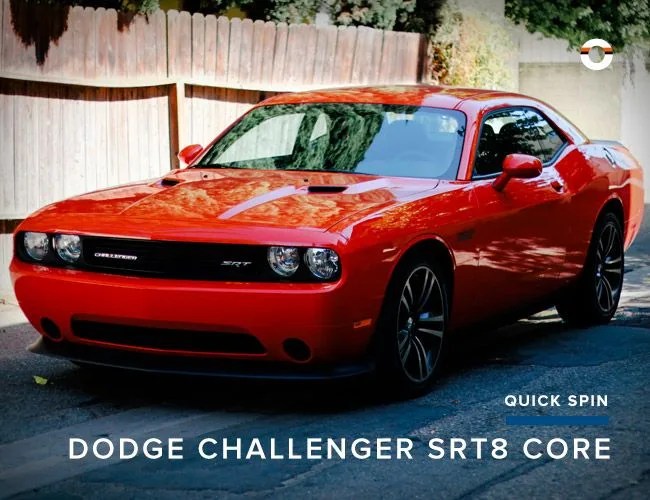9 photos
The Dodge Challenger first hit the scene in the ’70s to compete in the “Pony Car” market alongside the Ford Mustang and Chevy Camaro. Dodge built the car from 1970-1974; it disappeared, then re-emerged as a Mitsubishi build sold through Dodge from 1978-1983; then it disappeared again. Twenty-three years later, at the 2006 Detroit Motor Show, Dodge unveiled a concept of the current version, this time back in American hands. Retaining cues from the ’70s version such as the hood scoops, round headlights and overall wide and flat design, the third generation Challenger looks every bit the American muscle car. New this year, the 2013 Dodge Challenger SRT8 Core ($40,000) is made for those who want a massively powerful 6.4-liter V8, but who don’t care about the $5,000 extras in the fully loaded SRT8.
MORE HUGE HORSEPOWER: Behind The Wheel: Ferrari FF | Behind The Wheel: Aston Martin V12 Vantage Carbon Black Edition | Behind The Wheel: Audi R8 V10 Plus/a>
This thing is allergic to subtlety. It has a picnic table for a trunk, an exhaust that sounds like it was pulled from a dump truck, and a brushed metal “pistol grip” shifter to control the 470 horses sent to the rear 20-inch wheels. The interior, however, is refreshingly understated without edging on monotonous. There is a surprisingly large amount of room for driver and passenger; my 6’1″ frame fit comfortably in the back seat. The front seats are supportive and comfortable, and though visibility is lessened by the sweeping roof line, the restriction to sight is far less than other vehicles in its class. The trunk swallowed luggage and camera equipment or groceries and a stroller, no problem. All that room comes from somewhere; this car is big. You have to take extra care when navigating the long, wide nose through parking garages with their land mine pillars, lest you create a custom paint accent on the rear quarter panel.
The 6.4-liter V8 tops out at 182 mph and feels about 100 horsepower stronger than its 470 rating. This is likely owed to the six-speed tranny lifted right from the SRT Viper, which complements the low-end torque nicely and provides a driving experience as exciting as the Dukes of Hazzard paint job (it was off-putting at first, but grew on me). On the freeway, a simple downshift and a pulse of the throttle delivered a deep growl, the kind that reminds me why I love driving. The rear-wheel-drive setup coupled with this torquey V8 had me longing for a huge parking lot without security cameras. One high-revved shift makes it clear that this thing is a smoke show that destroys rubber faster than Ron Jeremy — the SRT Driving Performance class that comes with the purchase of each SRT model must simply focus on doing burnouts, doughnuts and drifting. Though it certainly drives far better than its ’70s daddy, the current Challenger is still very much a blunt force instrument — but the trauma it delivers is the kind any driver will relish.
The current Challenger is still very much a blunt force instrument — but the trauma it delivers is the kind any driver will relish.
The Brembos and vented rotors do a fantastic job of halting this ’70s tribute and are used in the standard brake drying system that engages whenever the wipers are in use, a nifty standard feature that’s the answer to a question no one asked. Also standard is the SRT Pages track computer system, which measures your 0-60 mph, 1/4 mile, braking distance and has a g-meter, all of which can be accessed through the U-Connect infotainment system or within the dashboard gauges, and which has the main goal of egging you on as you test your balls skills.









